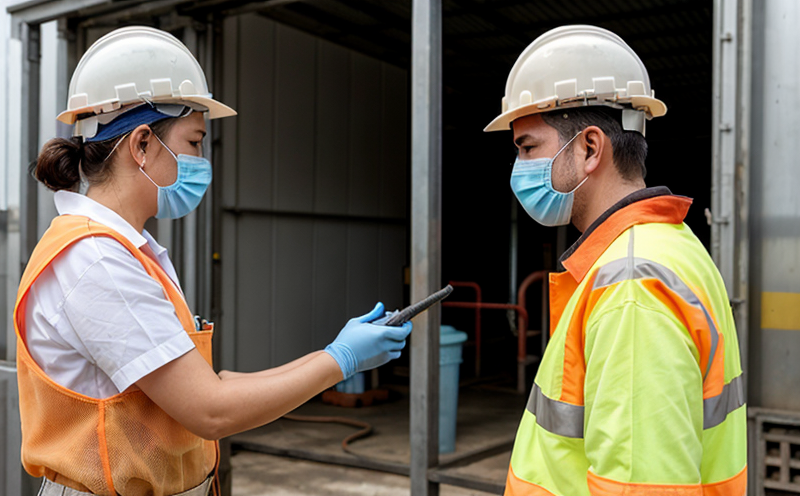Worker hygiene inspection
The worker hygiene inspection is a critical component of ensuring food safety and hygiene in the manufacturing sector. Foodborne illnesses are a significant public health concern, with contaminated foods being one of the major sources. Proper hygiene practices among workers can significantly reduce the risk of contamination, which directly impacts consumer health and the reputation of food manufacturers.
Worker hygiene is not just about handwashing; it encompasses a wide range of behaviors that minimize the transfer of pathogens from handlers to products. This includes wearing appropriate personal protective equipment (PPE), maintaining clean uniforms, washing hands at regular intervals, and avoiding touching raw ingredients with bare hands. The inspection process ensures compliance with established hygiene standards.
The importance of worker hygiene cannot be overstated. Inadequate adherence to hygienic practices can lead to cross-contamination, which is a primary cause of foodborne illnesses such as Salmonella, Listeria, and E. coli. These pathogens can persist on surfaces and in the environment for extended periods, making them difficult to eradicate if not properly controlled.
Regular inspections are essential to maintaining high standards of hygiene among workers. They serve multiple purposes: identifying non-compliance issues early, providing feedback to employees about their performance, and ensuring that corrective actions are taken promptly. Inspection protocols often involve visual checks, swabbing for pathogen presence, and reviewing documentation such as handwashing logs.
Compliance with international standards is crucial in the food industry. For instance, ISO 22000 provides a framework for food safety management systems that includes worker hygiene practices. Similarly, HACCP (Hazard Analysis and Critical Control Points) guidelines emphasize the importance of personal hygiene as a critical control point.
The impact of these inspections extends beyond mere compliance; they contribute to building trust with consumers who demand transparency and reliability from their food suppliers. A reputable inspection service enhances brand reputation and fosters customer confidence, which are vital for long-term business success in the competitive global market.
Scope and Methodology
| Aspect | Description |
|---|---|
| Hygiene Practices | Inspection covers handwashing, use of PPE, uniform cleanliness, and avoidance of touching raw ingredients with bare hands. |
| Visual Checks | Inspectors visually assess worker behavior and hygiene practices during routine operations. |
| Sampling and Testing | Pathogen presence is tested using swab samples from surfaces and equipment used by workers. |
| Documentation Review | Handwashing logs, training records, and other documentation are reviewed to ensure compliance with established protocols. |
| Training Sessions | Inspectors provide feedback during training sessions on best hygiene practices and corrective measures. |
| Follow-up Inspections | Regular follow-up inspections are conducted to ensure sustained adherence to hygiene standards. |
| Reporting | Detailed reports are generated, highlighting areas of compliance and non-compliance for continuous improvement. |
Customer Impact and Satisfaction
The impact on customers is profound when worker hygiene inspections are effectively implemented. Compliance with hygiene standards not only reduces the risk of foodborne illnesses but also ensures that products meet strict quality control criteria. This, in turn, enhances customer satisfaction as consumers can trust the safety and quality of the products they purchase.
Customer satisfaction translates into higher sales volumes and a stronger brand image. Brands that consistently demonstrate their commitment to worker hygiene are more likely to attract loyal customers who value transparency and reliability. Moreover, positive feedback from satisfied customers can lead to increased market share and better financial performance for food manufacturers.
The inspection service also supports customer relationships by addressing any concerns promptly. By ensuring that workers adhere to strict hygiene practices, the manufacturer can demonstrate its commitment to maintaining high standards of quality and safety. This proactive approach helps in building long-term partnerships with customers who appreciate such efforts.
In addition, effective worker hygiene inspections contribute to a safer working environment for employees. A clean and hygienic workplace reduces the risk of occupational health hazards, which can lead to higher productivity and job satisfaction among workers. This positive work culture further enhances overall customer satisfaction by fostering a more motivated and committed workforce.
Environmental and Sustainability Contributions
The worker hygiene inspection also plays an important role in the environmental sustainability of food manufacturing processes. By reducing contamination risks, inspections help minimize waste generation and resource consumption associated with reprocessing or discarding contaminated products. This leads to more efficient use of raw materials and energy resources.
Moreover, adhering to strict hygiene standards can prevent the spread of pathogens that might otherwise contaminate water sources or agricultural lands through improper disposal practices. This contributes to better environmental stewardship by preserving natural resources for future generations.
The inspection service supports sustainability goals by promoting best practices among workers that minimize their ecological footprint. For example, proper handwashing techniques conserve water and detergents while reducing the need for chemical disinfectants. Additionally, encouraging employees to adopt energy-efficient behaviors during operations helps reduce overall carbon emissions from industrial processes.
By integrating worker hygiene inspections into broader sustainability initiatives, food manufacturers can demonstrate their commitment to responsible environmental practices. This aligns with global trends towards sustainable development and encourages customers to choose environmentally friendly products over alternatives that may have higher ecological impacts.





